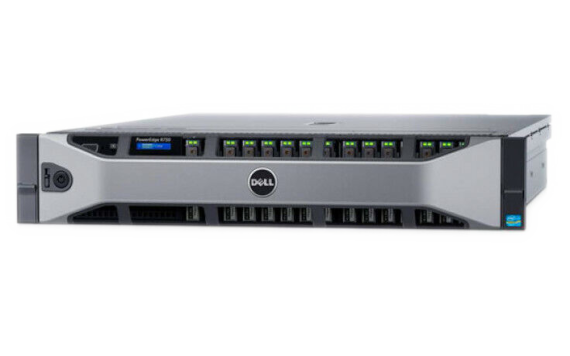Dell PowerEdge R730 Rack Server - System Overview
Description:
The Dell PowerEdge R730 is a two-socket, 2U rack server ideal for mission-critical applications, and enterprise level computing. This server is used by professionals in the areas of oil & gas exploration, financial analysis, 3D rendering, distribution rendering, and scientific applications. Designed to be highly scalable and energy efficient, it offers top notch server consolidation, management features, and excellent build quality. On site and remote system management give administrators intuitive tools to access and maintain system health and the ability to deploy applications and system updates from virtually anywhere.
Performance:
This platform is designed to handle just about any task, from general compute processing to High performance computing, requiring high bandwidth and enhanced networking. It supports either two Xeon E5-2600 v3 processors with four to 18 cores, or the E5-2600 v4 processors with four to 22 cores. When loaded with two of Intel's top of the line E5-2600 v4 processors, 44 cores and 88 virtual threads are available. With 24 DDR4 DIMM slots loaded with 64GB memory modules, it can house an impressive 1.5TB of memory. It also has the processing power, storage, and memory to deliver more, and larger, high-performing virtual machines for both data centers and cloud platforms. Using SQL Server 2012 Advisor allows users to perform custom-build capacity planning and sizing for Microsoft SQL Server database deployments based on specific hardware, software, and availability requirements. Utilization of VMware allows for the deployment and management of multiple virtual machine environments. Depending on your needs, the system supports several operating systems including Microsoft Windows Server, Red Hat Enterprise Linux, SUSE Linux Enterprise Server, VMware, and Citrix XenServer. The Dell R730 server and its more powerful counterpart the Dell PowerEdge R730xd are both SAP HANA certified appliances.
Serviceability:
The beautiful yet compact design gives easy access to internal components and illustrates Dell's attention to detail. Blue touch points indicate removable components and make maintenance and upgrade a breeze. The CPU and DIMM sockets are laid out in a neat row in the center of the chassis and are kept cool by up to six hot plug fans. An easily removable plastic air shroud channels cool air over the system memory and processors.
Management:
The system can be monitored remotely via the OpenManage Mobile app or you can connect to the server directly with iDRAC8 Quick Sync. An optional quick Sync bezel allows Android devices equipped with Near Field Communications (NFC) technology to access system health reports and logs with just a bump to the bezel. VPN's can easily be deployed and monitored via a laptop connected to the server's embedded iDRAC8 management-console interface for robust system management.
Environmental:
6 hot-plug fan modules handle heat distribution and overall system cooling allowing for high server functionality while maintaining low noise levels. Failed fans are easily removed and replaced without the use of any tools. While the fans may make some noise on initial start-up, once the system is up and running, it's surprisingly quiet, and rarely if ever kicks into overdrive.
Flexibility:
The Dell PowerEdge R730 features seven PCI-e 3.0 slots, allowing for maximum scalability and expansion when used for high-performance computing. Two 300W dual-width GPUs can be installed to increase performance and processing power for graphics-intensive virtual desktop infrastructure (VDI) implementations such as computer-aided design and manufacturing, and research and development applications. The internal hard drive bay holds up to 16 x 2.5" HDD, SAS, or SATA drives, or up to 8 x 3.5" HDD, SAS, or SATA drives. Depending on your configuration, it can support up to 64TB of storage. Dell's tool-less chassis design, along with hot-plug hard drives, hot-plug redundant cooling, and hot-plug redundant power ensure components can be easily removed resulting in less downtime and ease of maintenance for your IT staff.





